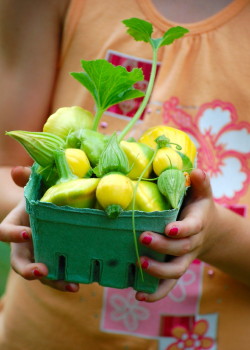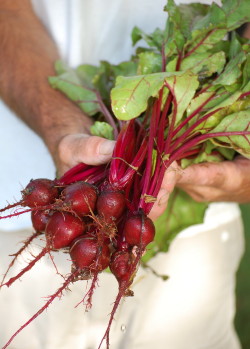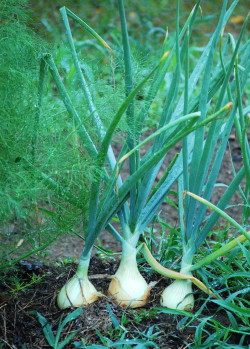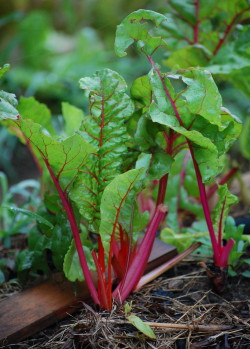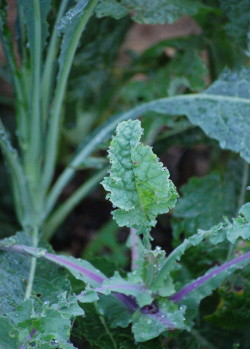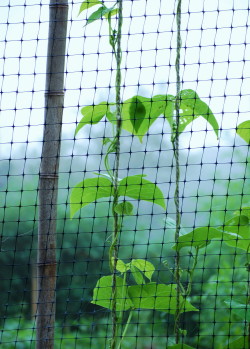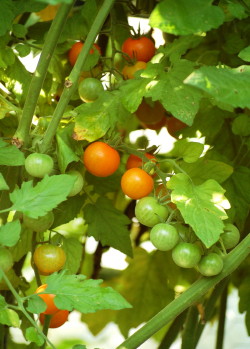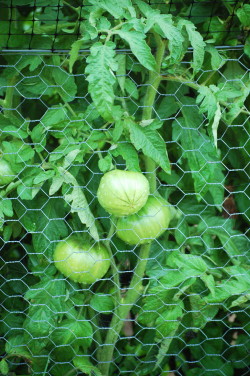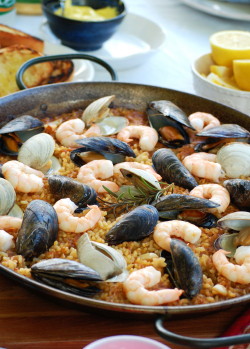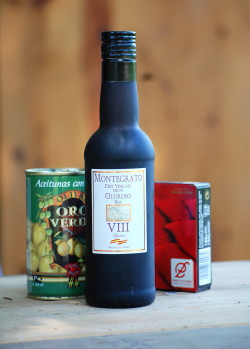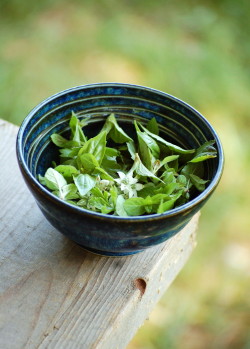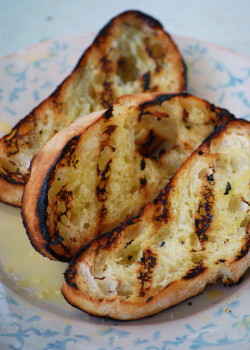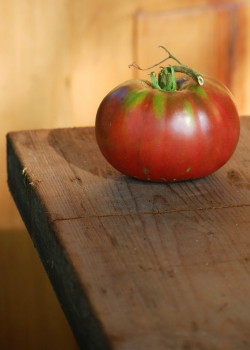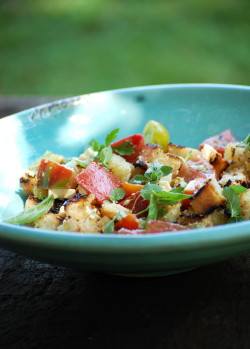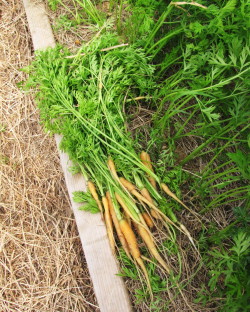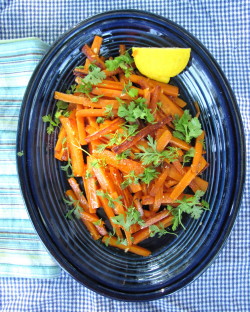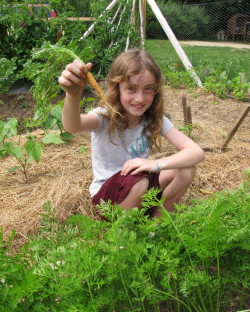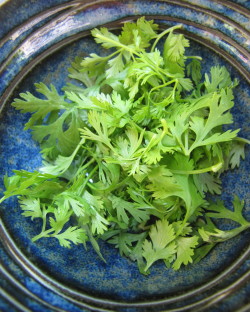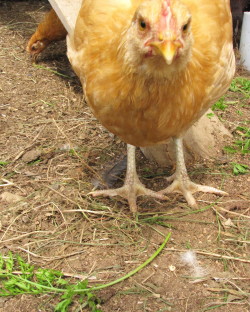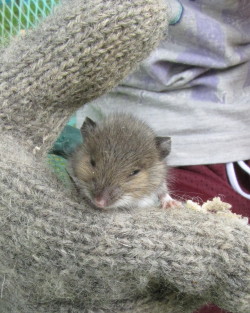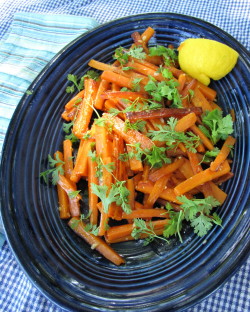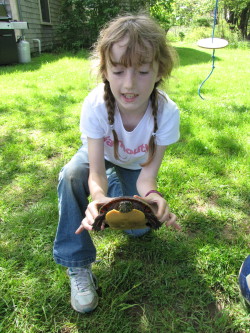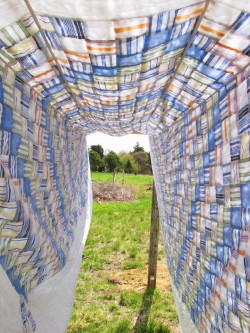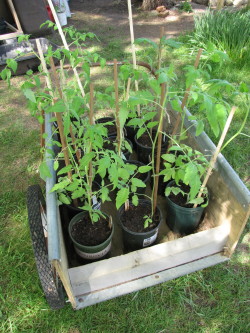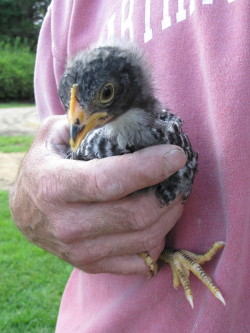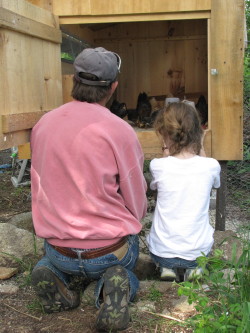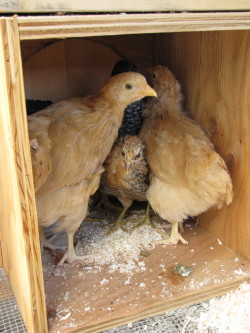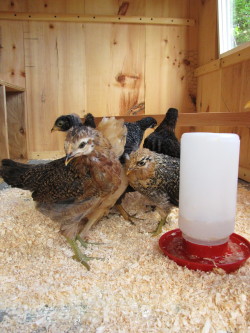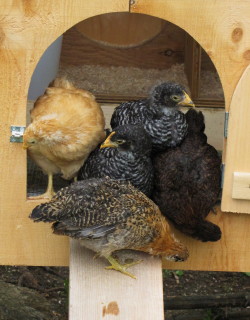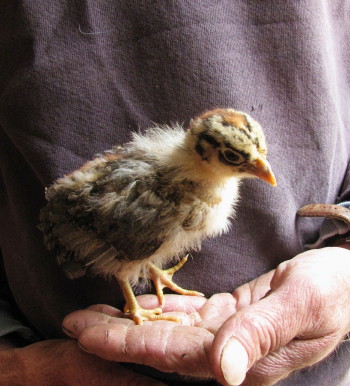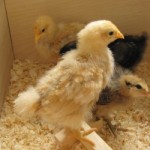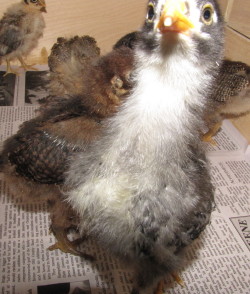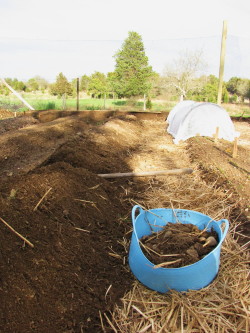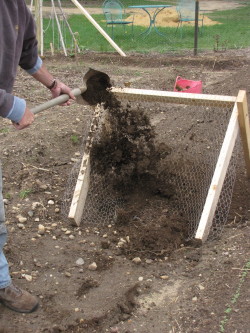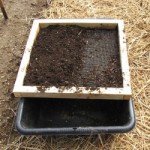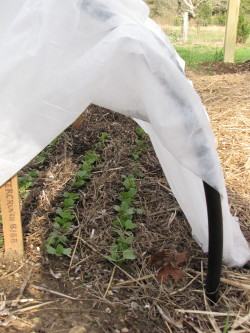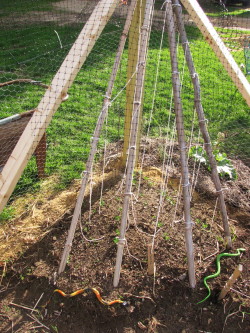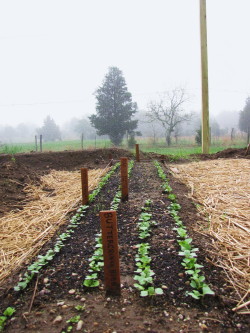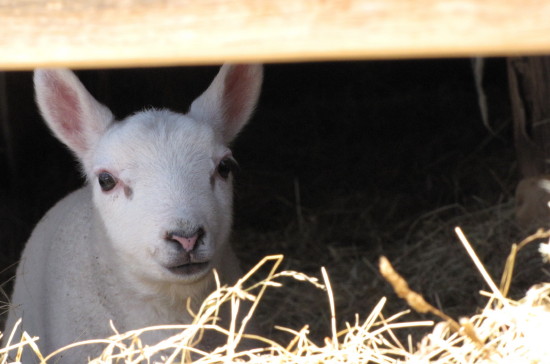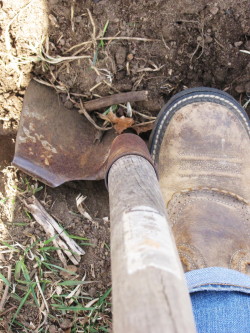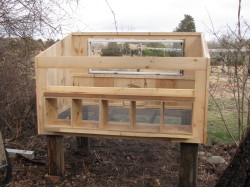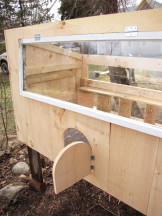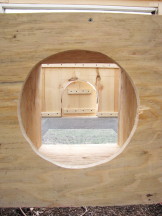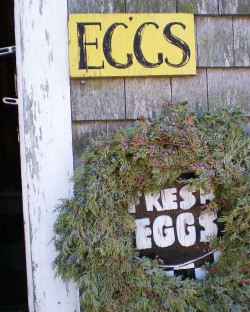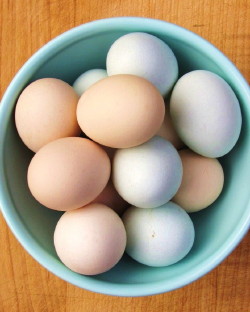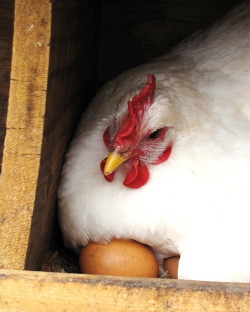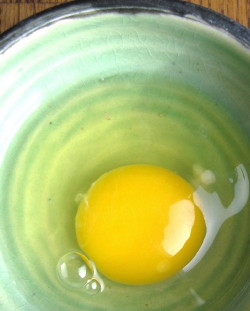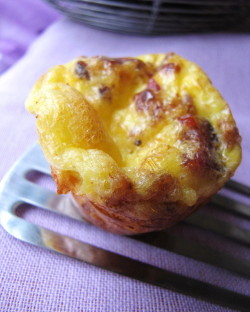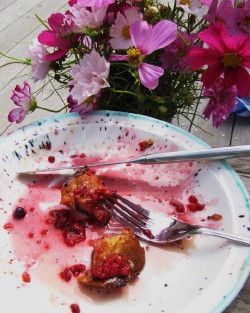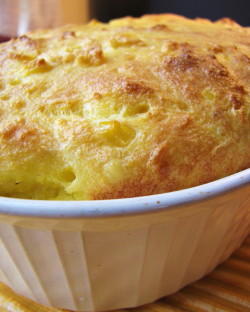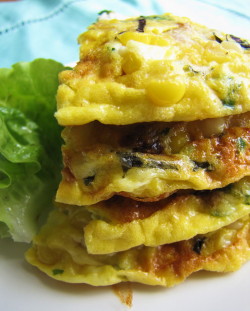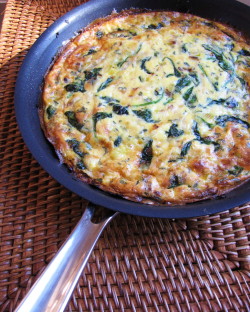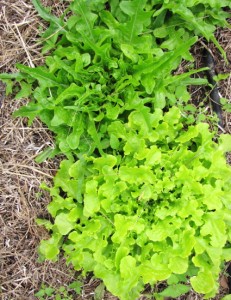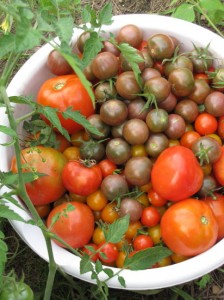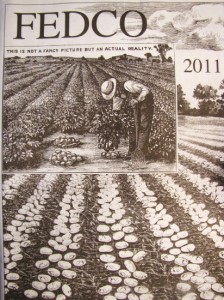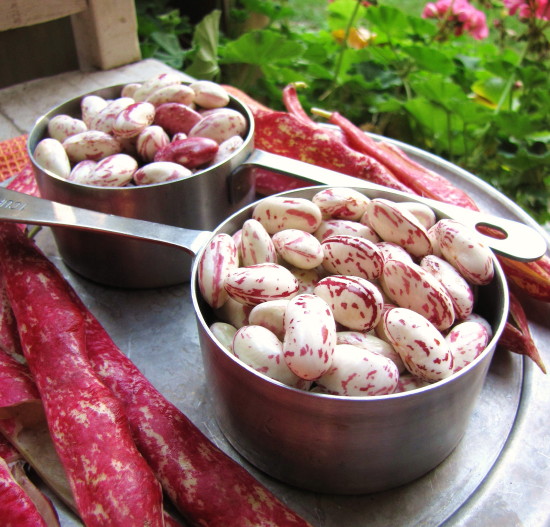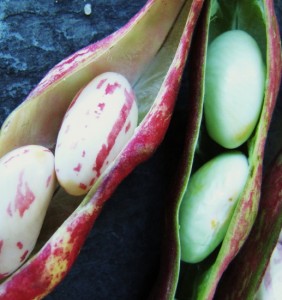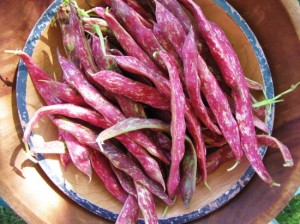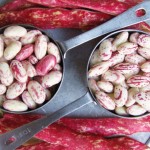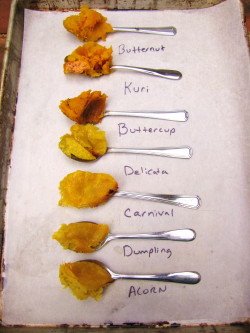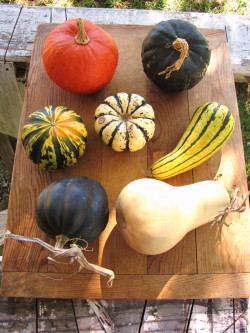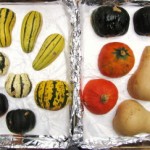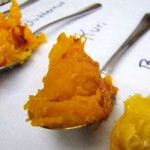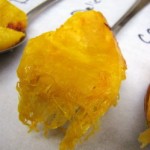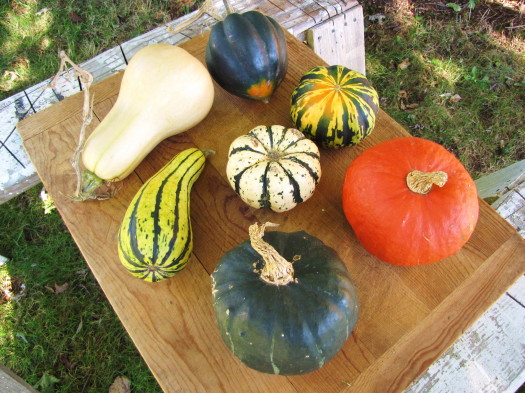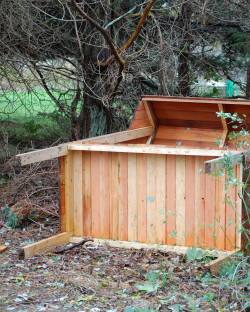
 The farm stand fell over on Saturday. Tipped by a terrific gust from the nor’easter, it fell backwards, impaling itself on a small rock in the process. Just a little damage to the roof, no big deal. But it’s funny. Seems the farm stand somehow knew the season was over. Only an hour earlier, as the rain began to fall harder and colder, a customer in a small white station wagon pulled up, bought everything left on the stand (the last green beans, two bags of arugula, a dozen eggs, an onion and an eggplant) and neatly pushed the baskets to the back of the stand to keep them dry. (Thank you, whoever you were.) Seeing the car pull away, I dashed out and carried the cooler and baskets in. We were all in the living room playing Monopoly when we heard the bang.
The farm stand fell over on Saturday. Tipped by a terrific gust from the nor’easter, it fell backwards, impaling itself on a small rock in the process. Just a little damage to the roof, no big deal. But it’s funny. Seems the farm stand somehow knew the season was over. Only an hour earlier, as the rain began to fall harder and colder, a customer in a small white station wagon pulled up, bought everything left on the stand (the last green beans, two bags of arugula, a dozen eggs, an onion and an eggplant) and neatly pushed the baskets to the back of the stand to keep them dry. (Thank you, whoever you were.) Seeing the car pull away, I dashed out and carried the cooler and baskets in. We were all in the living room playing Monopoly when we heard the bang.
I’ve been reluctant to say goodbye to the growing season, so maybe I needed a little encouragement from the universe. A day after the nor’easter, I got some more: The first heavy frost fell, turning the 5-foot tall zinnia plants, the bushy eggplants, the spindles of leafy pole beans—just about everything still green in the garden—into a ghastly scene from Beetlejuice. Frightful skeletons of their former selves, the plants said goodbye in a single night.
I should be so courageous, I thought, rummaging around the dead foliage, harvesting random peppers and eggplants that clung hopefully to the blackened vines. I was thinking about the daunting project that awaited me inside—a different kind of rummaging, this time through old memories.
We’d just hauled a load of cardboard boxes over from my storage unit—my goal to empty the thing out and quit paying the ridiculous $200 a month to store my tchotchkes. But our little farm house, charming as it is, can only hold so much. Built in 1895, it has no closets. We’ve turned an upstairs bedroom into a storage closet, but between clothes, linens, coolers, and extra pots and pans, there ain’t much more it can take. Time to lighten my load.
In the end, it was much easier than I thought to part with many of the old photographs and school reports and scrapbooks and diaries. (Being a 13-year old girl was hard enough—no need to relive it. All these many years later, and I still winced. I had to laugh, though—judging from the reams of notebooks, apparently I was highly verbal from a very young age!) The best memories drifted out of an old trunk my mother had packed up long ago with a few of my most precious toys and dolls and little-girl clothes. Raggedy Ann and Peter Rabbit—such good friends. I couldn’t let them go.
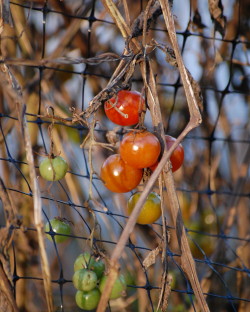
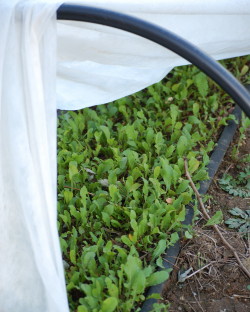 Why, I wondered, did letting go of the garden seem just as hard? (Or letting go of most of it—those darn rutabagas are alive and well, as are the kale plants—for now. And the lettuce and arugula we’ve protected under row cover and cold frame are thriving.) I think it’s only partly about how much I enjoy the gardening. The other part is that I seem to be extremely sensitive to two big issues these days: waste and expense. Why should we blithely ignore good food in our back yard, when we ourselves are on a tight budget, and the world at large—those who have enough to eat—is, too. Because despite the frost and the storm, every time I go out to the garden, I discover something else that’s still alive, still edible. Even the darn cherry tomatoes (hundreds of them) are still ripening. Inside, every surface in my office (while Roy puts new windows into the mudroom) is covered with trays of green tomatoes—rapidly turning red—that we picked during the last couple of weeks.
Why, I wondered, did letting go of the garden seem just as hard? (Or letting go of most of it—those darn rutabagas are alive and well, as are the kale plants—for now. And the lettuce and arugula we’ve protected under row cover and cold frame are thriving.) I think it’s only partly about how much I enjoy the gardening. The other part is that I seem to be extremely sensitive to two big issues these days: waste and expense. Why should we blithely ignore good food in our back yard, when we ourselves are on a tight budget, and the world at large—those who have enough to eat—is, too. Because despite the frost and the storm, every time I go out to the garden, I discover something else that’s still alive, still edible. Even the darn cherry tomatoes (hundreds of them) are still ripening. Inside, every surface in my office (while Roy puts new windows into the mudroom) is covered with trays of green tomatoes—rapidly turning red—that we picked during the last couple of weeks.
So I am hell-bent on still making our meals from the garden. (Not the whole meal, just some of it.) I made a delicious kale soup the other night, which I sold to Roy by including a good amount of andouille sausage and potatoes, along with some of those salvaged peppers, a late carrot, our stored onions, and plenty of garlic and spices. Sort of a Stone Soup with kale. I made a green tomato, gruyere, and leek gratin yesterday (good, but not the perfect match I was looking for with the tartness of green tomatoes).

 This morning I messed around with fried green tomatoes. And, actually, fried red (and reddish-green) tomatoes. And realized again how powerful childhood memories are. Some of them will be forever with us, no matter how many trunks we lock up or boxes we throw away. Growing up, summers in Delaware, we ate fried red tomatoes (not green tomatoes) on a regular basis. (A regional thing, I guess.) Seasoned with lots of salt and pepper and dredged simply in flour, the big cross-sections of beefsteaks cooked in butter or a little bacon fat took on a deep, umami-ish, almost stew-y flavor (with some sweetness, yes), and while I don’t remember absolutely loving them then, they were one of my Dad’s favorites. And tasting them this morning was a hugely familiar sensation, a reminder of my grandmother Honey and days at the beach. And I loved them. They’d be perfect with sausage and eggs for breakfast or sautéed flounder and garlicky spinach for dinner.
This morning I messed around with fried green tomatoes. And, actually, fried red (and reddish-green) tomatoes. And realized again how powerful childhood memories are. Some of them will be forever with us, no matter how many trunks we lock up or boxes we throw away. Growing up, summers in Delaware, we ate fried red tomatoes (not green tomatoes) on a regular basis. (A regional thing, I guess.) Seasoned with lots of salt and pepper and dredged simply in flour, the big cross-sections of beefsteaks cooked in butter or a little bacon fat took on a deep, umami-ish, almost stew-y flavor (with some sweetness, yes), and while I don’t remember absolutely loving them then, they were one of my Dad’s favorites. And tasting them this morning was a hugely familiar sensation, a reminder of my grandmother Honey and days at the beach. And I loved them. They’d be perfect with sausage and eggs for breakfast or sautéed flounder and garlicky spinach for dinner.
Turns out I don’t really love fried green tomatoes, though once I stopped being lazy (they require a commitment of several bowls—one for flour, one for egg, one for cornmeal and flour), I realized they are best with a crunchy coating, achieved by the three-part dredging. The cornmeal in the final coating is essential not only for texture and flavor, but also to help make an-extra firm coating that keeps steam inside while the green tomato fries. That steam, in turn, helps tenderize the green tomato and soften the tartness, too.
I tried the fried green tomatoes with a soy-lime-ginger dipping sauce like this one, thinking that would be a fun spin, sort of tempura-esque. But I wasn’t so crazy about that—even the little bit of lime was too much with the tartness of the green tomatoes. Because of the cornmeal, I also thought to try them simply drizzled with (you guessed it) maple syrup. Hmmm. Actually quite yummy. Well, I am predictable at least. I’ve had that sweet tooth all my life, too, and I don’t think it’s going away.

